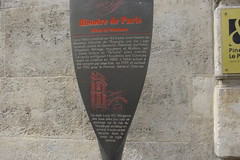

Christiaan Huygens FRS
(1629-1695)
Fellow of the Royal Society, mathematician, scientist, astronomer, physicist, horologist, and probabilist
Died aged c. 66
Wikidata WikipediaChristiaan Huygens, Lord of Zeelhem, FRS (/ˈhaɪɡənz/ HY-gənz, US also /ˈhɔɪɡənz/ HOY-gənz, Dutch: [ˈkrɪstijaːn ˈɦœyɣə(n)s]; also spelled Huyghens; Latin: Hugenius; 14 April 1629 – 8 July 1695) was a Dutch mathematician, physicist, engineer, astronomer, and inventor, who is regarded as one of the greatest scientists of all time and a major figure in the scientific revolution. In physics, Huygens made groundbreaking contributions in optics and mechanics, while as an astronomer he is chiefly known for his studies of the rings of Saturn and the discovery of its moon Titan. As an engineer and inventor, he improved the design of telescopes and invented the pendulum clock, a breakthrough in timekeeping and the most accurate timekeeper for almost 300 years. An exceptionally talented mathematician and physicist, Huygens was the first to idealize a physical problem by a set of parameters then analyse it mathematically, and the first to fully mathematize a mechanistic explanation of an unobservable physical phenomenon. For these reasons, he has been called the first theoretical physicist and one of the founders of modern mathematical physics. Huygens first identified the correct laws of elastic collision in his work De Motu Corporum ex Percussione, completed in 1656 but published posthumously in 1703. In 1659, Huygens derived geometrically the standard formulae in classical mechanics for the centrifugal force in his work De vi Centrifuga, a decade before Newton. In optics, he is best known for his wave theory of light, which he proposed in 1678 and described in his Traité de la Lumière (1690). His mathematical theory of light was initially rejected in favour of Newton's corpuscular theory of light, until Augustin-Jean Fresnel adopted Huygens's principle to give a complete explanation of the rectilinear propagation and diffraction effects of light in 1821. Today this principle is known as the Huygens–Fresnel principle. Huygens invented the pendulum clock in 1657, which he patented the same year. His research in horology resulted in an extensive analysis of the pendulum in Horologium Oscillatorium (1673), regarded as one of the most important 17th century works on mechanics. While the first and last parts contain descriptions of clock designs, most of the book is an analysis of pendular motion and a theory of curves. In 1655, Huygens began grinding lenses with his brother Constantijn to build refracting telescopes for astronomical research. He discovered the first of Saturn's moons, Titan, and was the first to explain Saturn's strange appearance as due to "a thin, flat ring, nowhere touching, and inclined to the ecliptic." In 1662 Huygens developed what is now called the Huygenian eyepiece, a telescope with two lenses, which diminished the amount of dispersion. As a mathematician, Huygens developed the theory of evolutes and wrote on games of chance and the problem of points in Van Rekeningh in Spelen van Gluck, which Frans van Schooten translated and published as De Ratiociniis in Ludo Aleae (1657). The use of expectation values by Huygens and others would later inspire Jacob Bernoulli's work on probability theory.
DbPedia
Commemorated on 1 plaque
Hôtel de Montmor Dans l'hôtel construit en 1623 pour Jean Habert de Montmor, trésorier de l'Epargne, son fils Louis recevait, autour de Gassendi, Roberval, Gui Patin, Chapelain, Ménage, Huygens et Molière, qui y donna lecture du "Tartuffe" alors interdit. Ce cercle préfigurait l'Academie des Sciences avant sa création en 1666. L'hôtel actuel a été remanié par deux fois: en 1737, et surtout en 1752 pour le Fermier Général Charron. De style Louis XV, l'élégance des deux ailes sur cour se prolonge sur la rue du Temple par un retour en arrondi. Il reste un bel escalier dans le corps de logis central.
English translation: Hotel de Montmor In the hotel built in 1623 for Jean Habert de Montmor, treasurer of the Epargne, his son Louis received, around Gassendi, Roberval, Gui Patin, Chapelain, Housekeeping, Huygens and Molière, who read the “Tartuffe” then forbidden. This circle prefigured the Academie des Sciences before its creation in 1666. The present hotel was redesigned twice: in 1737, and especially in 1752 for the farmer General Charron. Louis XV style, the elegance of the two wings on the courtyard extends on the street of the Temple by a round return. There's still a nice staircase in the central housing body. [AWS Translate]
79, Rue du Temple, 3rd arrondissement, Paris, France where they visited
